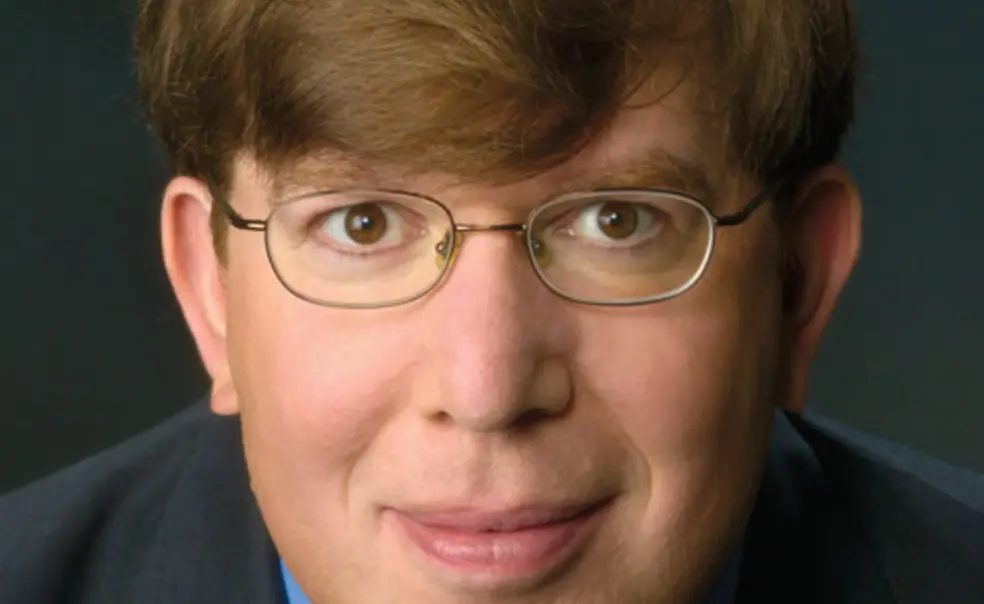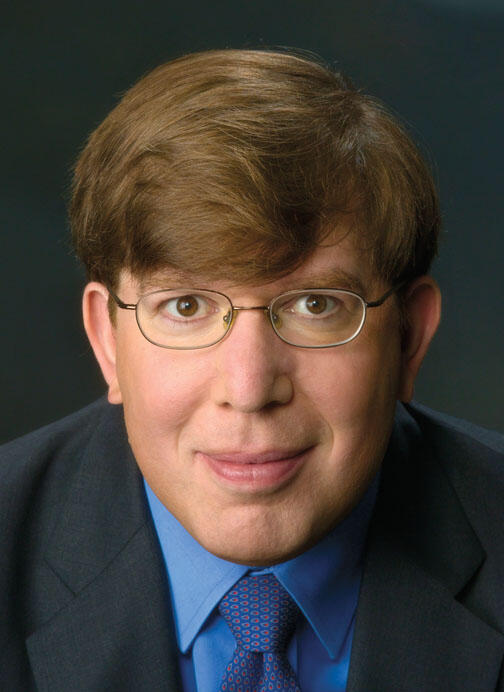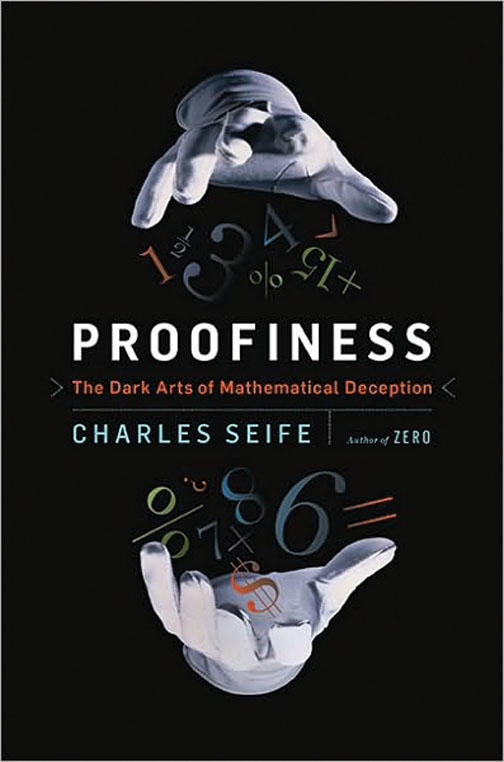When a group of scientists graphed the 100-meter dash times of male and female Olympic runners over a number of years, they found a striking pattern: By plotting the times and extrapolating, the scientists determined that female sprinters would outpace the men around the year 2156.
Impressive, but the trend lines the scientists drew “hide an absurdity,” writes Charles Seife ’93 in his new book, Proofiness: The Dark Arts of Mathematical Deception (Viking). If you extrapolate the data further, he writes, women eventually will break the sound barrier in the year 2600 and then the speed of light. Yet the study with the scientists’ prediction that women will outpace men was published by a peer-reviewed journal, Nature, in 2004.
That’s just one example in Seife’s book about information wrapped in numbers and numerical data that can mislead people into believing untruths or suggest a precision that does not really exist.
Seife says the scientists failed to recognize that because the women were at an earlier stage in the field of professional running than the men, their speeds would improve at a faster rate than those of the men for a period of time, but eventually would level off.
“Too many people, when they are presented with a number, they just think of it as a fact — that it’s indisputable. But there’s a lot that goes into creating those numbers and portraying those numbers and selecting data. If you look behind the curtain, there’s a lot of mischief that goes on that is covered by numbers,” says Seife, a science writer who teaches journalism at New York University.
Examples of “proofiness” — “the art of using bogus mathematical arguments” to “get you to swallow untruths” — abound, he argues. Advertisers forge statistics to promote their products, candidates fiddle with data to get elected, and pollsters use proofiness to “tell you what they want you to believe,” he writes. Seife says that in Al Gore’s film An Inconvenient Truth, Gore used a form of proofiness called “cherry picking” — selecting data that support your argument while ignoring or underplaying data that do not — when Gore showed graphics that implied sea levels will rise 20 feet in a century. Other scientists have predicted a smaller rise.
Seife, who examines the imprecision of counting people for the census, the errors involved in counting votes, and prosecutors’ misuse of numerical data to convict suspects in court, argues that such miscounting and misleading threaten our democracy. When an election is as close as it was in 2000 between George W. Bush and Gore, he says, there is no way to determine who really won — because the inherent errors involved in counting votes were so great that it was impossible statistically to tell who garnered the most. “We citizens have a hard time saying, ‘Given the instruments that we have, we can’t tell the difference between candidate A and candidate B. For all intents and purposes it’s a tie,’” he says. The solution, he says, would be to go to an agreed-upon “plan B” — whether a runoff election or the flip of a coin.
Don’t believe every number, graph, study, and poll you come across, warns Seife, and become a bit more skeptical when reading information that doesn’t seem to make sense.














1 Response
David T. Moran ’62
9 Years AgoMisleading numbers
As a career scientist in sensory neurobiology, I was delighted to read the article about Charles Seife ’93’s book, Proofiness: The Dark Arts of Mathematical Deception (Alumni Scene, Oct. 13).
When I was a grad student in biology at Brown in the late ’60s, I was astounded to see the blind faith people in general — and scientists in particular — had in explanations based on numbers. The “technique of data enrichment” was nowhere more apparent than in many papers I saw given at the American Association of Cell Biology. Here, a presenter would show a slide of a graph with points scattered all over the place. These “data points” were neatly interconnected by a prominent straight line whose direction was coincident with the (foregone) conclusion the scientist was trying to make. I quickly learned there’s an unwritten rule operating here: “Any four points on a graph can be connected by a straight line.”
It seems that in most human activi ties — including science — the primary use of human reason is the substantiation of existing prejudices, not the generation of new conclusions. Consequently, in most conversations, the participants busily collect whatever facts and figures they can to support their position and “win” the conversation. Because of our blind faith in numbers, the figure-laden “facts” — be they credible or spurious — often carry the day.
The PAW writer’s summary provides a wise guide to decision-making: “Don’t believe every number, graph, study, and poll you come across, warns Seife, and become a bit more skeptical when reading information that doesn’t make sense.”
Kudos for Charles Seife. Let’s hear it for common sense!